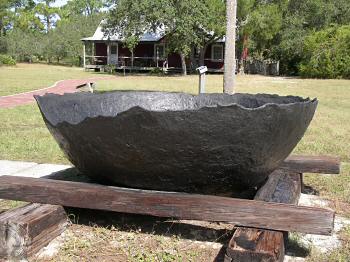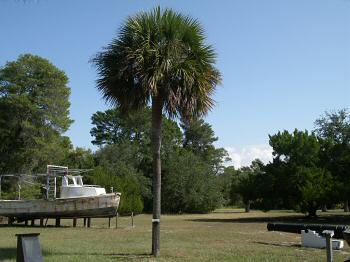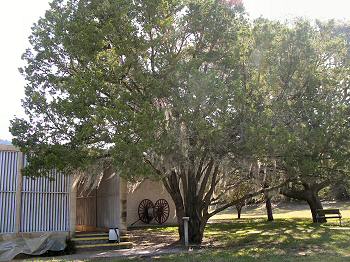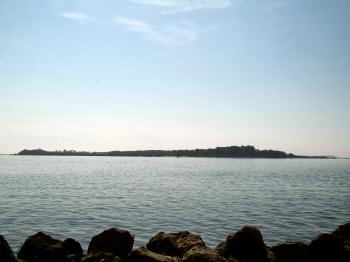|
(11-2006) Cedar Key Museum
Confederate Salt Kettle
Interpretive Sign: In the days before refrigeration, pork, beef and
fish were packed in salt to prevent spoiling during shipment and storage.
Salt was produced by boiling sea water in kettles like this. As the water
boiled away, salt was left. This kettle is one of 60 that produced 150
bushels of salt a day at the Cedar Key Confederate salt works which were
destroyed by a Union raiding party in October 1862 |
|
(11-2006) Cedar Key Museum
Sabal Palm
Interpretive Sign: Commonly called Cabbage Palm. Florida's state
tree was of great importance to early Floridian's. The trunk was used by
the Indians and pioneers for log houses. When cut into small blocks, it
becomes a durable scrub brush. The leaves are still used today for the
roofs of the Seminole Chickees and can be woven into hats and baskets. The
heart, called swamp cabbage, can be eaten raw or cooked however, this
kills the tree and should be discouraged |
|
(11-2006) Cedar Key Museum
Southern Red Cedar
Interpretive Sign: This Evergreen commonly grows where limestone is
near the surface. Its silvery blue berries and conical shape make it a
popular tree for ornamental planting. The berries are eaten by many birds
including the cedar waxwing, and bagworm cocoons are often found in its
branches. The red heart wood is moth repellent and is used for closet
lining and chests. The wood is also used for lead pencils. Is your pencil
made of cedar? |
|
(11-2006)
Atsena Otie Key was
used as a supply depot for Federal troops and a military hospital |



